PROTECT YOUR DNA WITH QUANTUM TECHNOLOGY
Orgo-Life the new way to the future Advertising by Adpathway
The Chinese Monal is one of the three monal species – the other two are Slater’s Monal and the Himalayan Monal. Among these, the Chinese Monal is the heavyweight, though as it is living in fairly remote areas, it is largely immune to fat-shaming.
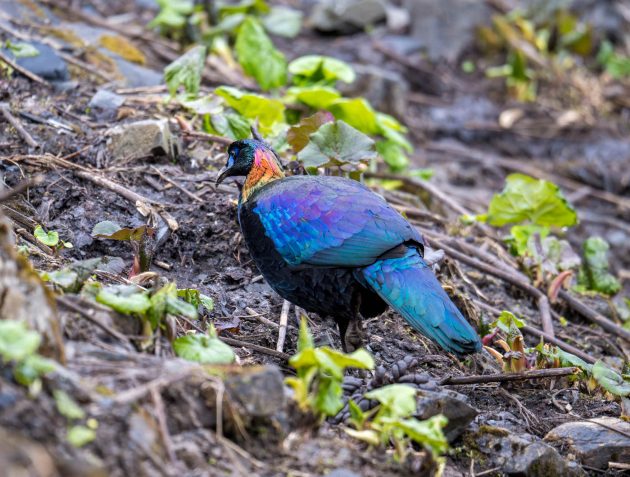
The scientific name of the Chinese Monal (Lophophorus Lhuysii) commemorates Édouard Drouyn de Lhuys (1805-1881), a French diplomat with no known interests or activities in ornithology.
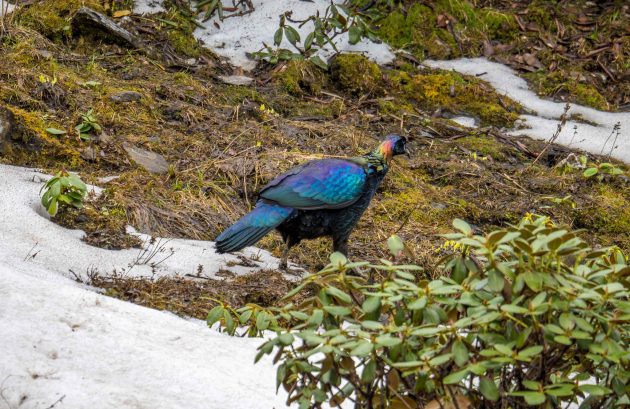
However, he did once say – about Napoleon III, not Donald Trump – “the Emperor has immense desires and limited abilities. He wants to do extraordinary things but is only capable of extravagances.”
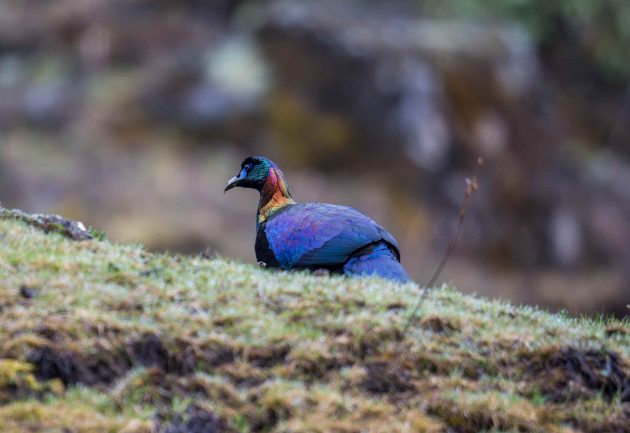
Of course, the joy of following up on people like him is in finding dirt on them. Does marrying your niece count? ChatGPT tells me it is illegal in most places, but maybe that did not apply to a French nobleman …
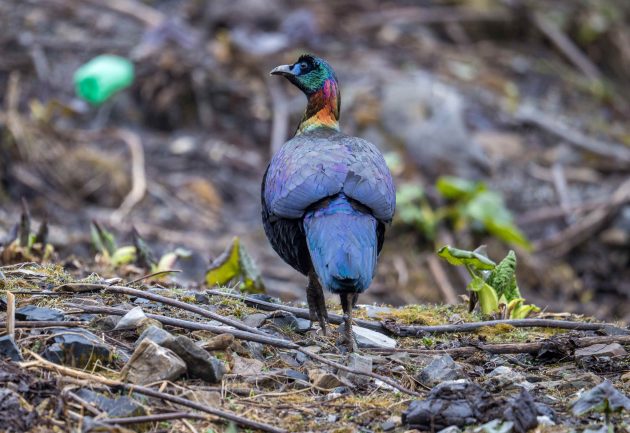
The Chinese Monal is listed as Vulnerable – the estimated population is about 2,500 to 10,000 individuals. The species is threatened by livestock farming, poaching, and herb gathering (source).
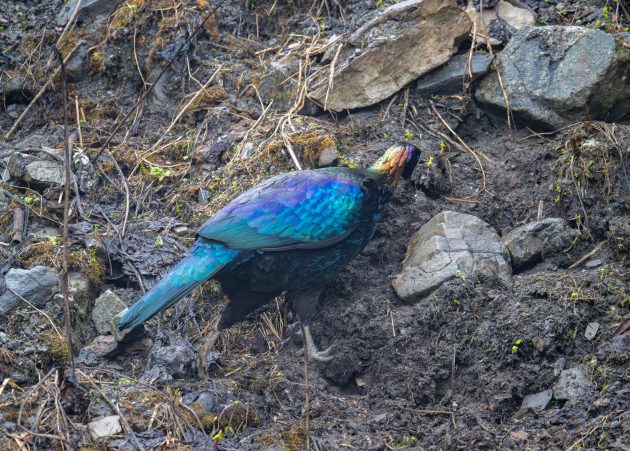
What kind of habitat does it prefer? Apparently, the preferences are as follows (source):

- High elevation (3,700 to 4,300 m)
- Intermediate slopes (27° to 33°)
- Proximity to exposed slope faces
- Higher proportion of meadows and tundras rather than forests and bushes
- Higher rock coverage during breeding, higher herb coverage during non-breeding
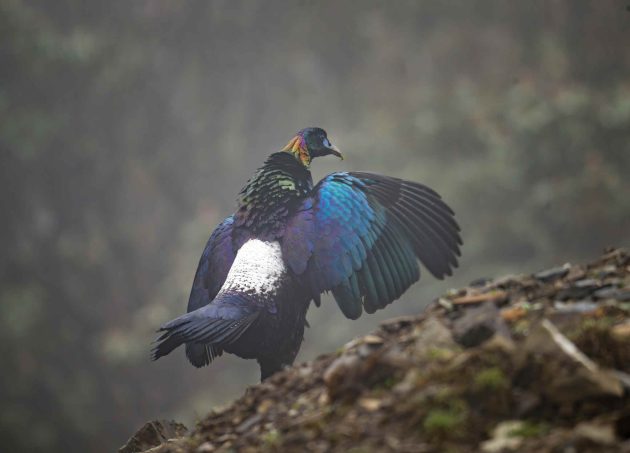
So as usual, it all comes down to location, location, location.
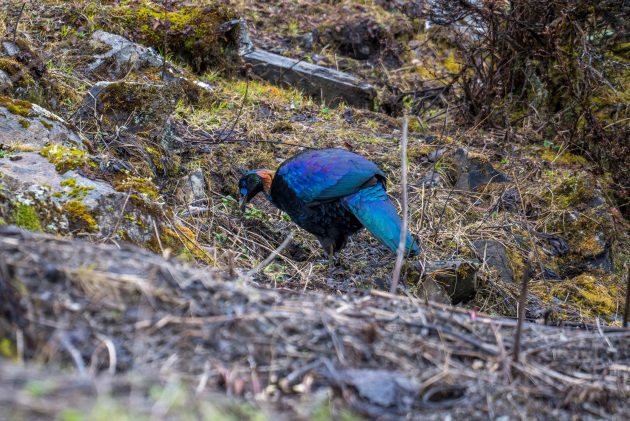
And you will not be surprised that the authors of this study also believe that “These findings enrich our understanding of the life history, biology, and ecology of Chinese Monal.”
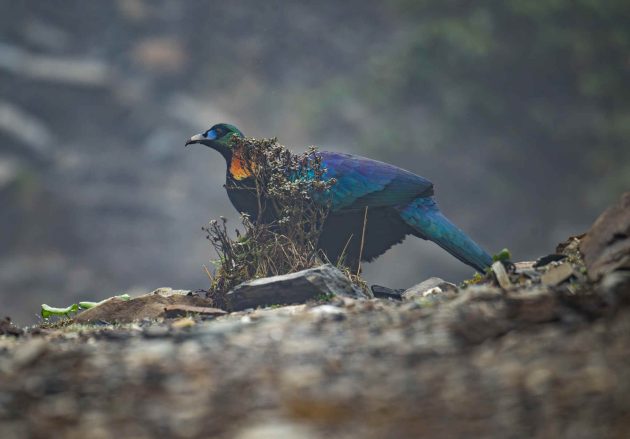
As some of my photos show, it feeds on roots and bulbs of plants.
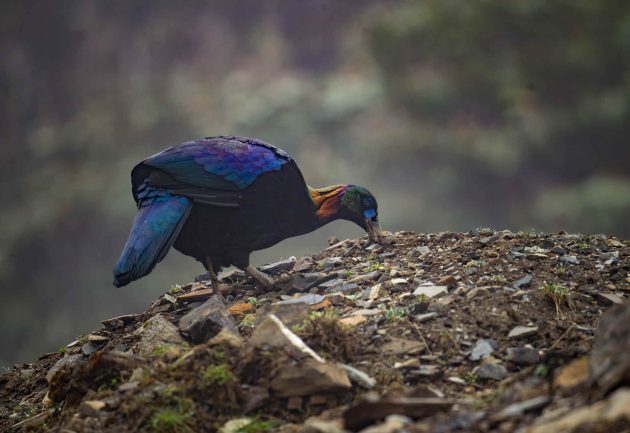
In the past, such dietary information was gathered directly from the stomach content of killed individuals. However, as a recent paper drily comments, “this approach is not applicable in endangered wildlife research under current legislation because it is fatal to the subjects”. Instead, monal feces were analyzed, though the researchers tactfully describe their work as studying “the plant diet of this species using a DNA metabarcoding approach”.
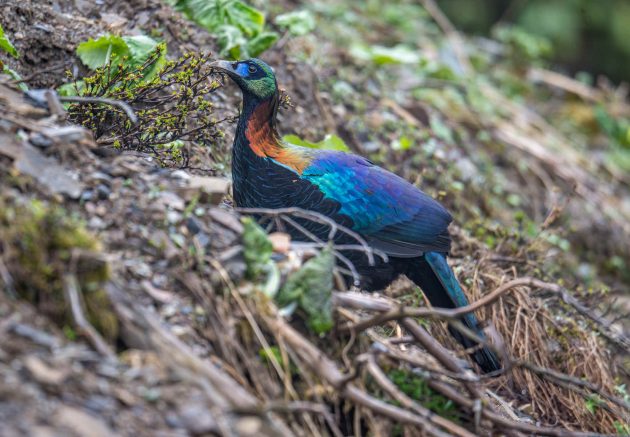
Several researchers seem to be weirdly obsessed with the gut microbiota of Chinese Monals, resulting in papers such as “Gut microbiota composition and metabolomic profiles of wild and captive Chinese monals” (executive summary: the two are quite different) and “Seasonal Changes and Age-Related Effects on the Intestinal Microbiota of Captive Chinese Monals” (executive summary: it fluctuates with the season). As I am not quite as obsessed with the same topic, you will have to check out the papers yourself for more details.
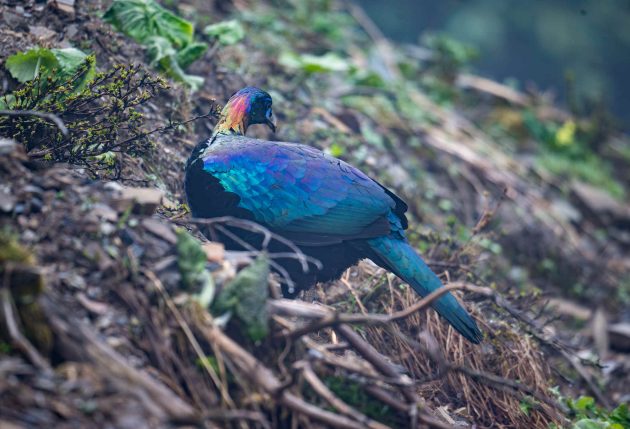
Interestingly, the HBW insists that the species does not move downhill in winter (original source here), while the local guide (in Sichuan, where I took the photos in this post in May 2025) told me that indeed they do come down.
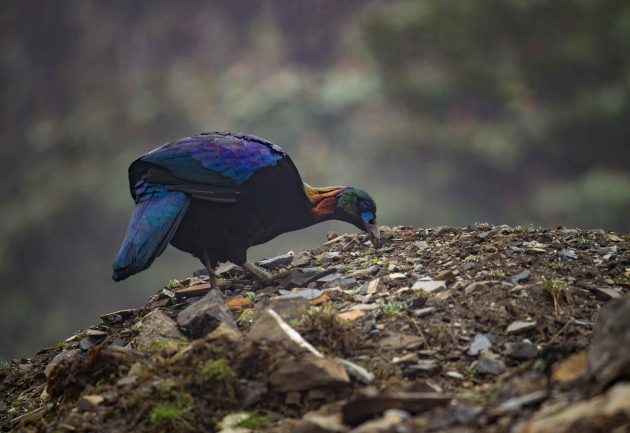
Living at this high altitude unfortunately means that the Chinese Monal will be strongly affected by climate change as its range shrinks (source).
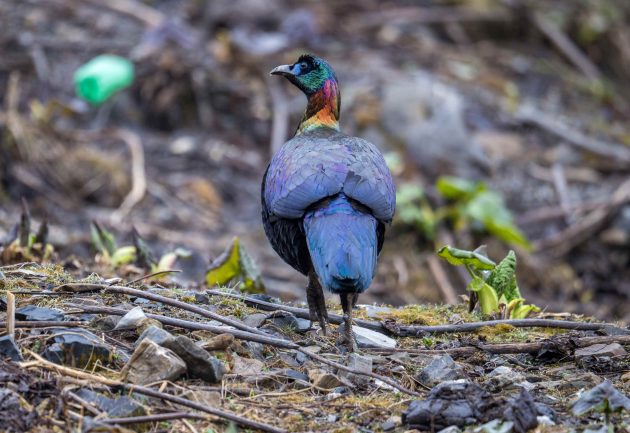
This is probably not the reason why, already in 1993, work was done covering “Artificial Incubation Studies of The Chinese Monal“. Newer efforts to support breeding of the monal have more complicated titles, such as “Characterization of highly polymorphic microsatellite markers for the Chinese Monal (Lophophorus lhuysii, Galliformes) using Illumina MiSeq sequencing“. Some of this work seems successful, though weirdly, a post on such successes uses a photo of a Himalayan Monal to report the successful artificial breeding of Chinese Monals.
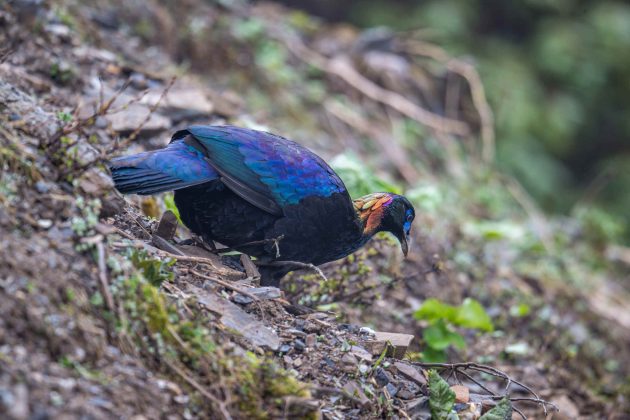
As I open the page describing this success, it shows as the top news (which seems to be updated – the original post is from 2019) the following item: “International Children’s Day: President Xi’s time with children“. I am very pleased to read that “The growth and well-being of children always weigh heavily on the mind of President Xi Jinping”, and will sleep well tonight.
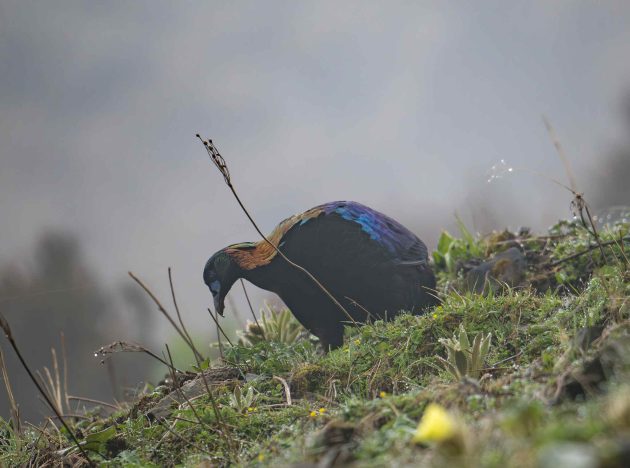
Written by Kai Pflug
Kai has lived in Shanghai for 21 years. He only started birding after moving to China, so he is far more familiar with Chinese birds than the ones back in his native Germany. As a birder, he considers himself strictly average and tries to make up for it with photography, which he shares on a separate website.He hopes that few clients of his consulting firm—focused on China’s chemical industry—ever find this blog, as it might raise questions about his professional priorities. Much of his time is spent either editing posts for 10,000 Birds or cleaning the litter boxes of his numerous indoor cats. He occasionally considers writing a piece comparing the two activities.



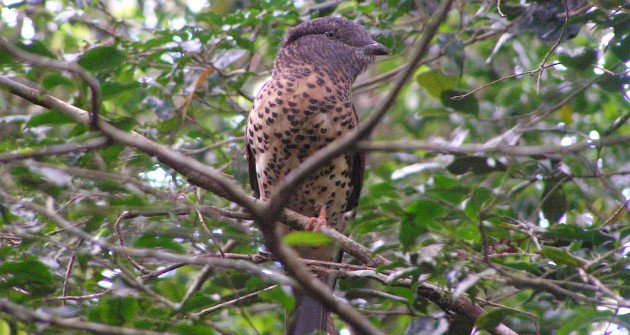



















 English (US) ·
English (US) ·  French (CA) ·
French (CA) ·